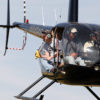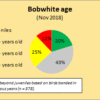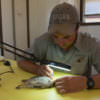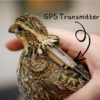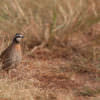
One of the most pressing challenges in wildlife research is selecting the right tools to gather accurate data without disrupting the behavior of the species being studied. At the Rolling Plains Quail Research Ranch (RPQRR), we’re addressing this challenge head-on with a new project that compares two technologies for tracking bobwhites: GPS and VHF radio telemetry collars.
Our goal is to evaluate the accuracy, time investment, and economic feasibility of each method to determine which best supports our long-term mission of quail conservation through scientific research. This initiative not only builds on our ongoing commitment to innovation but also seeks to guide future tracking strategies used by wildlife professionals across the region.
In a previous article, Dr. Foley discussed the use of these collars. However, an often-overlooked factor in the use of technology in the scientific realm are the costs associated with these technologies. As the Director of the Foundation, cost is always an important consideration. Can the additional costs of new technologies be outweighed by larger and more accurate data sets gained? This is the core of this research project. To evaluate this question, we deployed 40 GPS and 40 VHF collars on quail across the Research Ranch during our Spring trapping season in March, 2025.
The Technologies
For this project, we’re using two types of tracking collars:
- Druid Nano GPS Collars: These state-of-the-art devices are compact and light enough for bobwhites and offer automated location recording throughout the day. Each unit costs $250 and provides numerous location fixes daily, typically at set intervals (e.g., hourly), giving researchers a detailed view of a quail’s daily movement patterns.
- VHF Collars from American Wildlife Enterprises: These collars represent a more traditional technology in wildlife telemetry. Costing $200 per unit, they require a technician to physically locate each bird with a handheld receiver and directional antenna. Because of the labor involved, we generally record only one location per bird per day.
Cost-Benefit Analysis
Data Collection and Accuracy: The most significant advantage of the GPS collars lies in the volume and accuracy of data. Multiple automated GPS fixes allow us to construct highly detailed movement paths and habitat use profiles for each bird. In contrast, the VHF system yields a single data point per day, offering only a coarse picture of movement unless field teams invest significant additional effort.
Labor and Time Commitment: GPS collars reduce human labor substantially. Once deployed, the collars autonomously collect location data, freeing up staff for other critical tasks. Conversely, VHF tracking demands daily boots-on-the-ground work. Field technicians must search for each bird, often in rugged terrain and under variable weather conditions. This makes the VHF approach more time-intensive and potentially more disruptive to the birds.
Equipment Reliability and Recovery: One important consideration is collar recoverability and long-term data security. GPS collars depend on solar charging to remain operational. If the collar is obscured by dense vegetation or plumage and fails to receive adequate sunlight, it may stop functioning and become difficult to locate. Without a real-time radio signal, retrieving the collar—and the valuable stored location data—becomes a significant challenge. In contrast, VHF collars emit a continuous pulse, making it far easier for technicians to track and recover them, even if the bird has perished or the collar has become detached.
Economic Costs: While GPS collars cost $50 more per unit, their higher data yield and lower labor demands may result in lower long-term costs per data point. For example, one technician can retrieve and download thousands of data points from GPS collars over a few weeks, compared to the slow and steady pace of daily manual VHF tracking. However, these GPS collars rely on cellular communications to upload the data to a central database. An added requirement of using these trackers is the use of “HUB’s”. These are stations that automatically download data from each collar when the quail comes within a 1,600 yard diameter of the HUB. With each HUB costing roughly $1200, and adding to that a $60 subscription fee for the cellular data usage, the actual cost of the GPS collar quickly exceeds the $250 base price.
Looking Ahead
As this project unfolds, we’ll continue to analyze and compare the real-world performance of these collars under field conditions. Our preliminary impressions suggest that the higher upfront investment in GPS technology may be justified by the quality and quantity of data obtained. However, VHF collars remain a viable and more affordable option for smaller-scale studies or programs with limited funding.
This research underscores RPQRR’s dedication to applying cutting-edge technology in our quest to better understand quail ecology. By refining our methods, we’re not just improving our own research—we’re helping set the standard for quail studies nationwide. – by Dr. Ryan O’Shaughnessy
Interested in helping with this project? Then consider making a donation of $250 towards the purchase of a GPS collar, donations can be made at https://www.quailresearch.org/donate/





